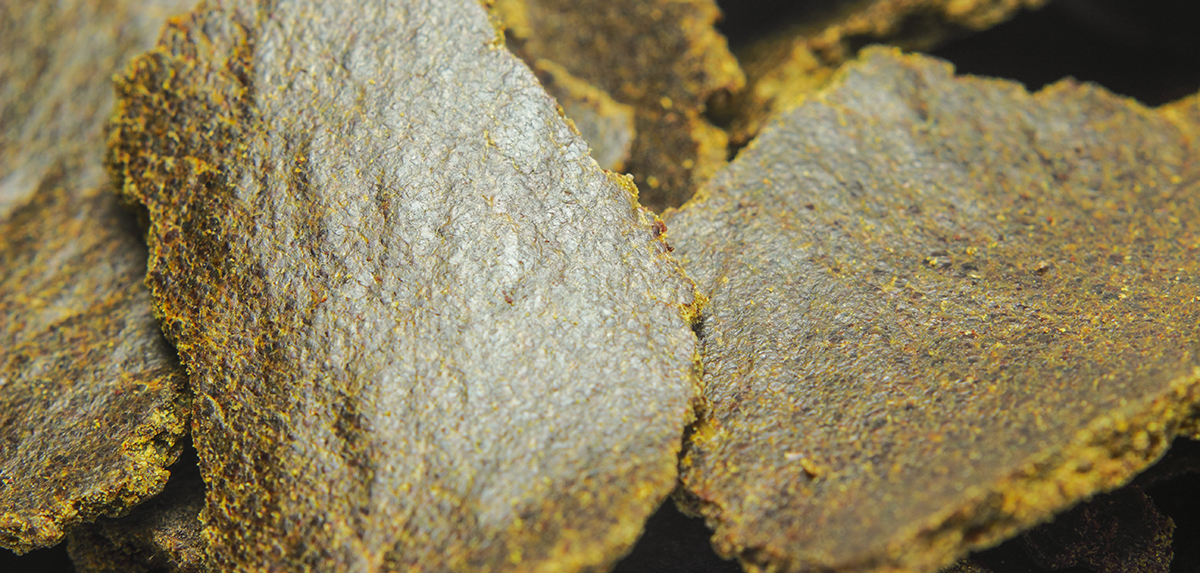
Just like with the oil, the processing of solids does not end at the press. Solids must be handled properly after the press or it can lead to inferior product quality in the best cases and an unmarketable product in the worst cases. Luckily, Anderson can guide you through every step of the oil milling process to minimize operating expenses while maximizing yields and product quality.
When oil is extracted from seeds using a press like an Anderson Expeller®, solids are discharged from the press in large chunks known as expeller cake. The cake is typically about a quarter to half an inch thick, irregular, and can have an initial temperature in excess of 200 degrees Fahrenheit. The cake can be ground into meal and used for animal feed. Manufacturers need to be aware of the proper way to process and handle this material before storage to ensure a quality product.
Keeping it Cool
Some oil manufacturers make a mistake when handling the expeller cake downstream, disregarding the impact of heat during this stage in the process. Heat is used to enhance oil extraction, but once that process is complete, it is necessary to take heat out of the product as soon as possible to preserve quality. If hot solids are stored or bagged for a certain length of time, it will precipitate enzymatic activity that fuels fungus growth and can spoil the product. The best way to prevent this issue is to use a cake cooler to reduce the temperature before moving to the next step in the process.
A cake cooler operates based on heat transfer principles, with outside air entering through inlets and continuously blown over the cake to reduce its temperature. The air inlets are grated openings allowing for airflow but preventing anything else from being pulled into the cooler. A primary fan and an exhaust fan work together with a cyclone in a horizontal design to ensure the cake is in constant contact with the outside air. A vertical design eliminates the need for a primary fan and only uses the exhaust fan. The cooler should cool the cake down to within 10 degrees Fahrenheit of ambient temperatures to prepare it for grinding.
Need assistance with your oilseed equipment now?
Do not hesitate to call us at 1(800) 336-4730 or use our contact form.
Ready for Grinding
Once the cake has been adequately cooled, it is sent to the hammermill for grinding. These machines typically feature a horizontal row of hammers that rotate at either 1,800 or 3,600 RPMs. The hammers are surrounded by a screen perforated to the size of the meal needed by a customer. The perforated screens can be adjusted or changed as required to produce different particle sizes for different needs.
During this process, a factor to consider is the dust created from grinding, which can pose a safety hazard. An air assist system on the hammermill will help keep the screens and plant clean. The air assist system pulls air through the hammermill’s discharge to keep the dust down that is coming out of the product. This works in conjunction with a cyclone to separate solids that the air pulls before discharging into the atmosphere.
An Ounce of Prevention
Like any step in oilseed manufacturing, failure to invest in the right equipment can lead to problems down the line and reduce product quality. To that end, one of the most valuable assets in the oilseed business is an experienced partner who can provide an end-to-end multi-vendor turnkey system and works with you to customize and optimize that system to suit your business goals.
With Anderson’s proven track record of building and maintaining cutting-edge oilseed processing environments, we are confident we can help you thrive in today’s crowded market.
For more information, contact us today.